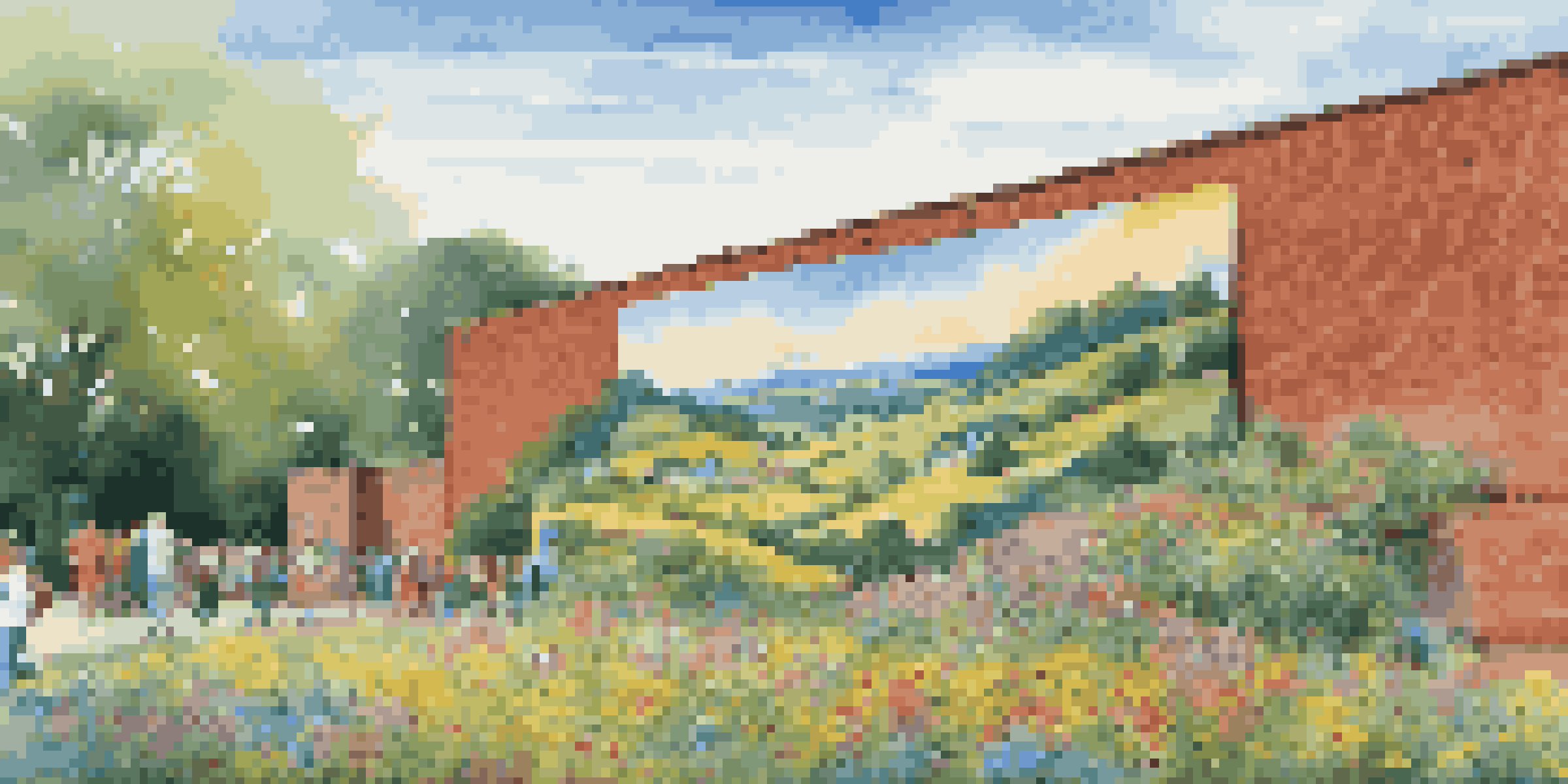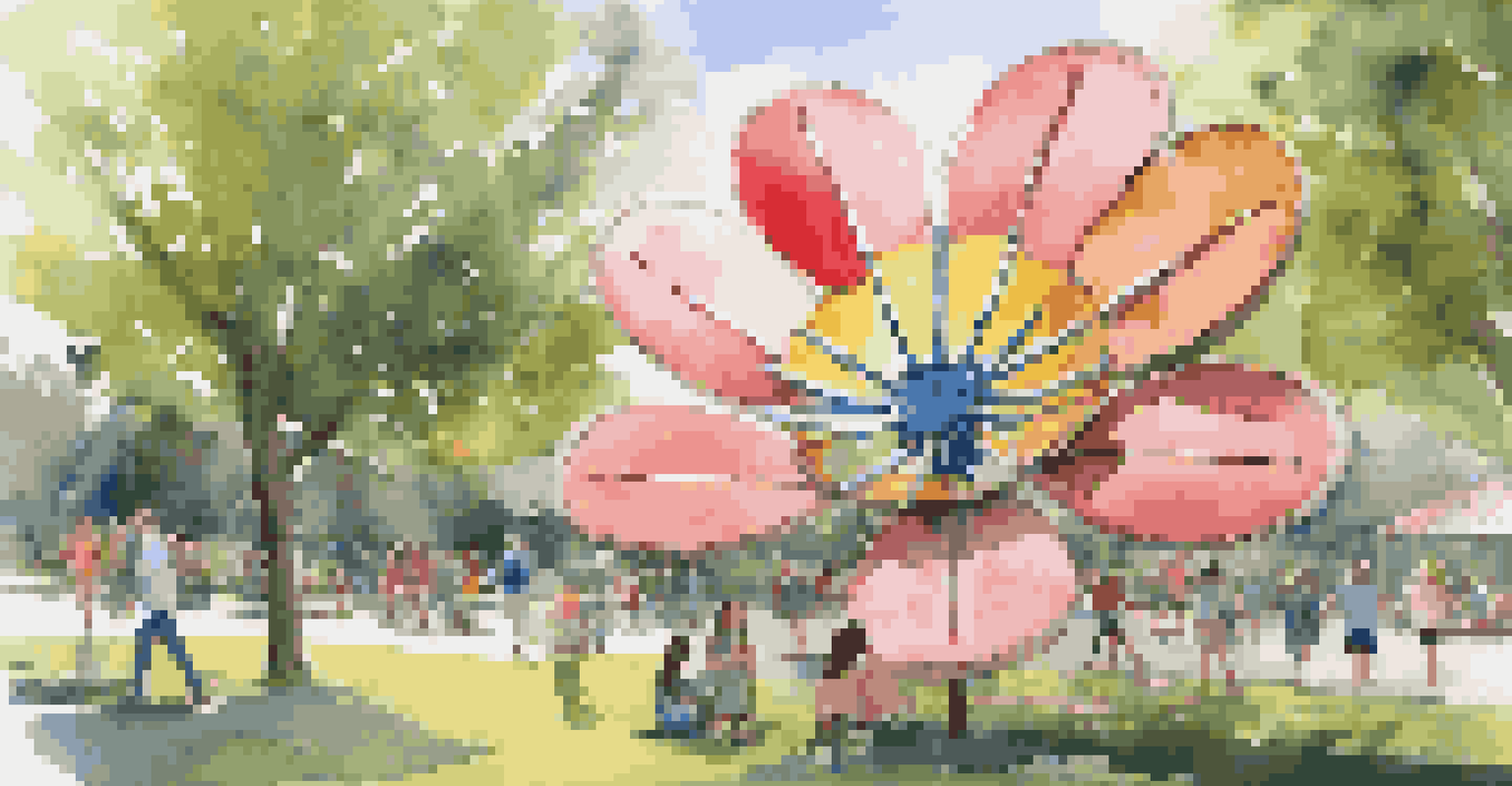Creating a Unique Outdoor Art Installation

Understanding the Purpose of Your Outdoor Art Installation
Before diving into the creative process, it’s crucial to first understand the purpose behind your outdoor art installation. Are you looking to beautify a public space, raise awareness about an issue, or simply express your artistic vision? Defining the purpose will guide your decisions throughout the project.
Art is not freedom from discipline, but disciplined freedom.
Consider the emotional response you want to evoke in your audience. For instance, a vibrant mural might bring joy, while a thought-provoking sculpture could spark conversation about environmental issues. This clarity will not only inspire your design but also help you connect with viewers on a deeper level.
Finally, think about the message you want to convey. A strong, clear message can transform your installation from just a visual piece into a powerful statement that resonates with the community.
Choosing the Right Location for Your Installation
The location of your outdoor art installation is just as important as the artwork itself. Factors such as foot traffic, visibility, and accessibility can significantly influence the impact of your piece. For example, a busy park may offer a great opportunity to engage with a diverse audience.

Take the time to scout potential sites and consider how the environment will interact with your artwork. Natural light, surrounding landscapes, and existing structures can either enhance or detract from your installation. A well-chosen location can create a harmonious relationship between the art and its setting.
Define Your Installation's Purpose
Understanding the purpose of your outdoor art installation guides your creative decisions and connects with the audience.
Also, think about the community's connection to the space. An installation in a beloved local park may foster a sense of pride and ownership, whereas a piece in an overlooked area might highlight the need for revitalization.
Designing Your Art Installation with Creativity
Once you have a clear purpose and location, it’s time to let your creativity shine in the design phase. This is where your vision starts taking shape, whether it’s a sculpture, mural, or even an interactive piece. Sketching your ideas can help visualize how they will fit into the chosen space.
The best way to predict the future is to create it.
Consider incorporating elements that invite viewer interaction, such as movable parts or sensory experiences. For instance, an installation that changes with the wind or encourages touch can create a more engaging experience for passersby, inviting them to connect with the art.
Don’t shy away from using unconventional materials or techniques. Recycled materials, for example, can add a unique texture and message of sustainability, making your installation not only visually appealing but also meaningful.
Planning for Safety and Durability
Creating an outdoor art installation requires careful planning, especially regarding safety and durability. Ensure that your artwork can withstand various weather conditions, from rain to intense sunlight. Choosing the right materials is key; for instance, weather-resistant paints and sturdy structural components can prolong the life of your installation.
Safety should be a top priority, particularly if your installation will be in a public space. Consider potential hazards, such as sharp edges or unstable structures, and take steps to mitigate these risks. Engaging with local authorities can also ensure compliance with regulations and safety standards.
Choose a Strategic Location
Selecting the right location enhances your installation’s visibility and community engagement.
Regular maintenance is essential to keep your installation looking its best. Setting up a plan for upkeep can help maintain the artwork’s appeal and safety over time, creating a lasting impact in the community.
Engaging the Community in Your Project
Involving the community in your outdoor art installation can foster a sense of ownership and pride. Consider hosting workshops or informational sessions where locals can contribute ideas or even help in the creation process. This collaboration can lead to unique perspectives that enrich your final piece.
Additionally, sharing your journey through social media can create buzz and anticipation around your installation. Documenting the process, from initial sketches to the final reveal, invites the community to engage and feel invested in the project.
Hosting a launch event can further strengthen community ties. Celebrate the completion of your installation with an unveiling ceremony, inviting local residents, artists, and stakeholders to join in the festivities.
Marketing Your Outdoor Art Installation
Once your installation is complete, it’s time to spread the word! Effective marketing can increase visibility and encourage more visitors to engage with your art. Utilize social media platforms to showcase stunning visuals and share the story behind your creation.
Consider collaborating with local influencers or community organizations to reach a wider audience. They can help promote your installation, drawing attention to its significance and encouraging more people to visit.
Involve the Community for Impact
Engaging the community fosters pride and ownership, enriching the art installation experience.
Don’t forget about traditional marketing methods, too. Flyers, local newspaper articles, and community boards can help get the word out, especially among those who may not be active online.
Evaluating the Impact of Your Installation
After your outdoor art installation has been in place for a while, it’s important to evaluate its impact. Gather feedback from the community through surveys or informal conversations to understand how people are engaging with the piece. This feedback can provide valuable insights for future projects.
Take note of how the installation has affected the surrounding area. Are more people visiting the space? Has it sparked conversations or inspired new community initiatives? Observing these changes can reveal the true power of art in public spaces.

Finally, reflect on your own experience throughout the process. What went well, and what could be improved for future installations? This reflection can help you grow as an artist and enhance your future projects.